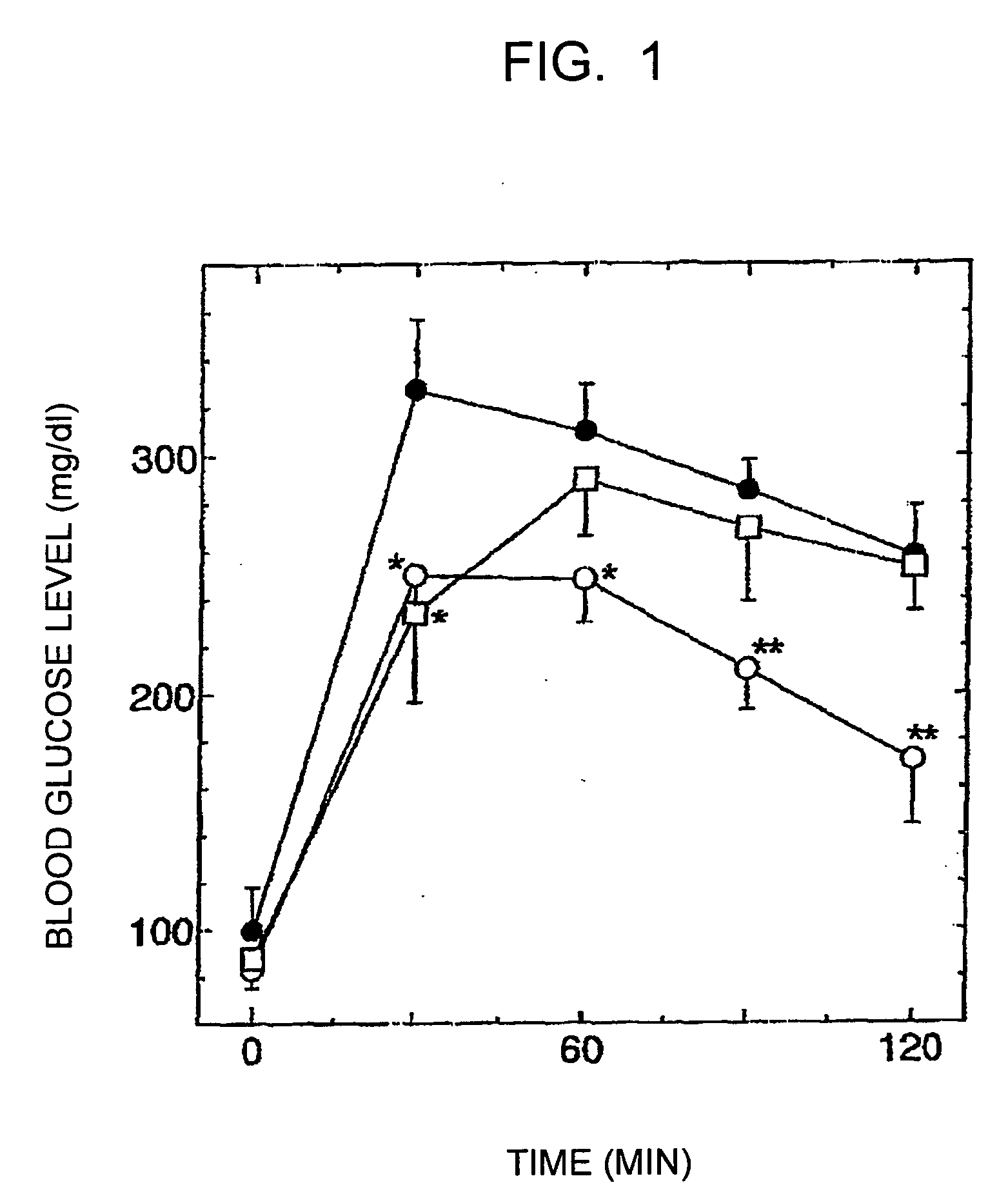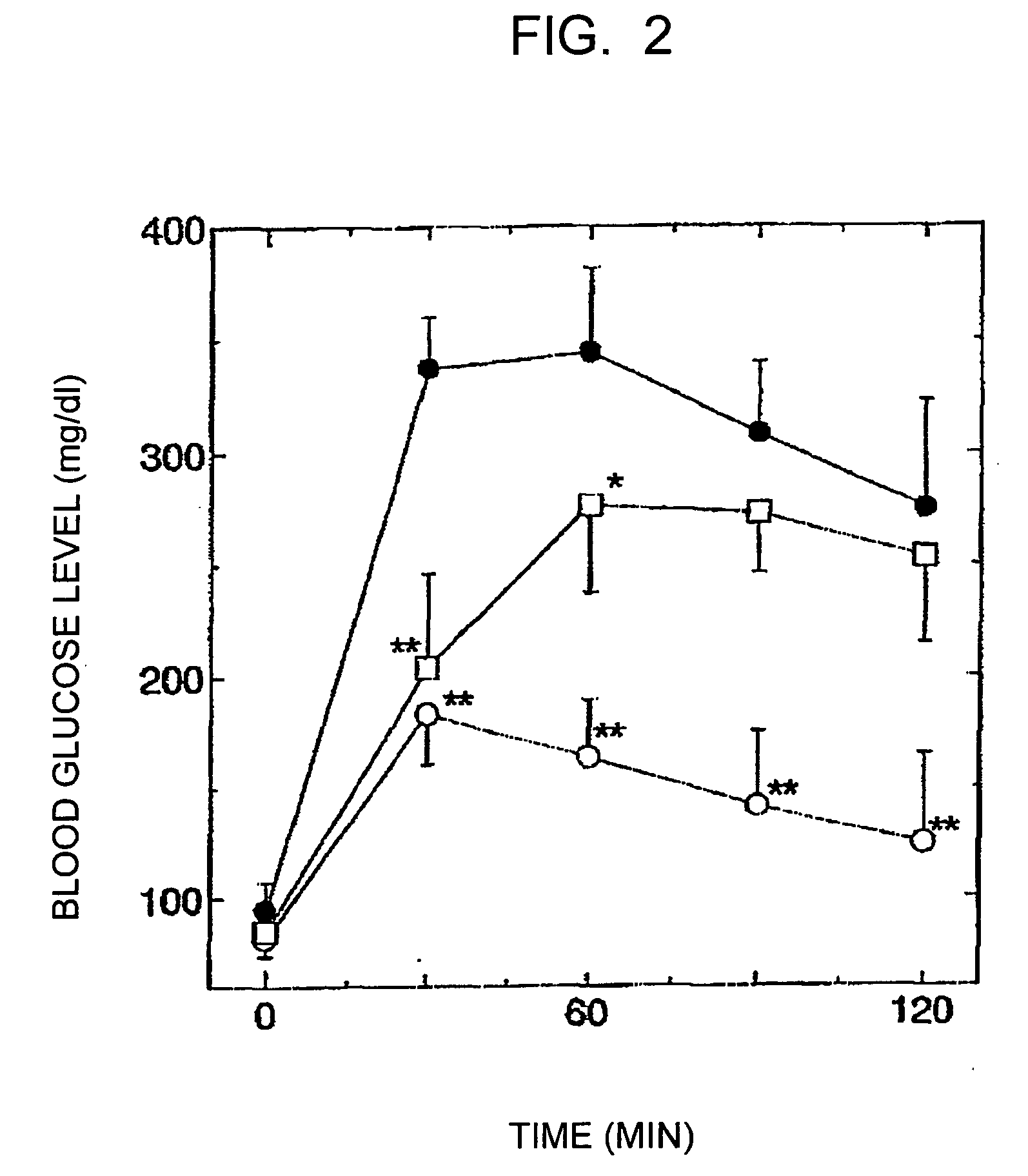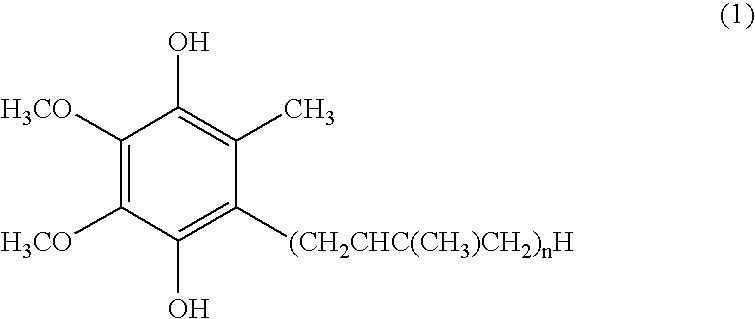Compositions for diabetes
a technology for diabetes and compositions, applied in drug compositions, peptide/protein ingredients, metabolic disorders, etc., can solve the problems of lack of symptoms indicating hyperglycemia, ineffective insulin injection for type ii diabetes patients, and frequent uncontrolled blood glucose level, etc., to reduce coenzyme q10, reduce coenzyme q10, and increase blood glucose level
- Summary
- Abstract
- Description
- Claims
- Application Information
AI Technical Summary
Benefits of technology
Problems solved by technology
Method used
Image
Examples
example 1
Effects on Model Rats Having Type II Diabetes
[0055] The improvement effects of the reduced coenzyme Q10 and the oxidized coenzyme Q10 on the glucose tolerance were examined using model GK rats (5 weeks old, male) having Type II diabetes. The rats were fed ad libitum with a powdered feedstuff containing 0.1 percent by weight of the reduced coenzyme Q10 (containing 2 percent by weight of the oxidized coenzyme Q10) or a feedstuff containing 0.1 percent by weight of the oxidized coenzyme Q10. In order to avoid the reduced coenzyme Q10 in the feedstuff mixture from decreasing due to oxidation, the feedstuff was completely replaced with a new one every two days. The control group was fed with a powdered feedstuff free of coenzyme Q10. The glucose tolerance test was conducted four weeks and six weeks after the feeding of the feedstuff mixture was started (n=4 in each group). In the glucose tolerance test, a 50% glucose solution was orally administered at a dose of 4 ml / kg, and the blood g...
example 2
Effects on Blood Glycosylated Hemoglobin
[0059] The blood glycosylated hemoglobin (hemoglobin Alc) level of GK rats fed for 12 weeks was measured as in EXAMPLE 1. The results are shown in Table 1. The hemoglobin Alc level in the group fed with the reduced coenzyme Q10 showed a significant decrease, i.e., about 78% of the blood hemoglobin Alc level of the control group. In contrast, although the hemoglobin Alc level in the group fed with the oxidized coenzyme Q10 showed a decrease, i.e., 92% of that of the control group, the decrease was not significant and was smaller than the decrease achieved by the group fed with the reduced coenzyme Q10. Glycosylated hemoglobin levels are clinically important parameters for controlling blood glucose levels. The fact that the group fed with the reduced coenzyme Q10 showed a significantly low level indicates that the blood glucose level of GK rats was satisfactorily controlled by the administration of this substance. The group fed with the oxidize...
PUM
| Property | Measurement | Unit |
|---|---|---|
| chromatography | aaaaa | aaaaa |
| purity | aaaaa | aaaaa |
| composition | aaaaa | aaaaa |
Abstract
Description
Claims
Application Information
 Login to View More
Login to View More - R&D
- Intellectual Property
- Life Sciences
- Materials
- Tech Scout
- Unparalleled Data Quality
- Higher Quality Content
- 60% Fewer Hallucinations
Browse by: Latest US Patents, China's latest patents, Technical Efficacy Thesaurus, Application Domain, Technology Topic, Popular Technical Reports.
© 2025 PatSnap. All rights reserved.Legal|Privacy policy|Modern Slavery Act Transparency Statement|Sitemap|About US| Contact US: help@patsnap.com



